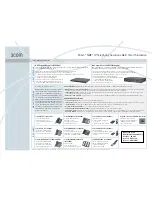
Section 4A: Safety Guidelines
201
or near the FCC limits for cellular or PCS frequencies an individual would
essentially have to remain in the main transmitted radio signal (at the height of
the antenna) and within a few feet from the antenna. This is, of course, very
unlikely to occur.
When cellular and PCS antennas are mounted on rooftops, RF levels on that roof
or on others near by would probably be greater than those typically encountered
on the ground. However, exposure levels approaching or exceeding safety
guidelines should be encountered only very close to or directly in front of the
antennas. In addition, for sector-type antennas, typically used for such rooftop
base stations, RF levels to the side and in back of these antennas are insignificant.
General guidelines on antenna installations and circumstances that might give
rise to a concern about an facility's conformance with FCC regulations can be
found in A Local Government Official's Guide to Transmitting Antenna RF
Emission Safety: Rules, Procedures, and Practical Guidance. This Guide can be
accessed at:
http://www.fcc.gov/oet/rfsafety
.
Who regulates exposure to radiation from microwave ovens, television
sets and computer monitors?
The Food and Drug Administration is responsible for protecting the public
from harmful radiation emissions from these consumer products.
Does the FCC routinely monitor radiofrequency radiation from
antennas?
The FCC does not have the resources or the personnel to routinely monitor the
emissions for all the thousands of transmitters that are subject to FCC
jurisdiction. However, the FCC does have measurement instrumentation for
evaluating RF levels in areas that may be accessible to the public or to workers.
If there is evidence for potential non-compliance with FCC exposure guidelines
for a FCC-regulated facility, staff from the FCC's Office of Engineering and
Technology or the FCC Enforcement Bureau can conduct and investigation,
and, if appropriate, perform actual measurements. Circumstances that could
give rise to a concern about an facility's conformance with FCC regulations can
be found in A Local Government Official's Guide to Transmitting Antenna RF
Emission Safety: Rules, Procedures, and Practical Guidance. This Guide can be
accessed at:
http://www.fcc.gov/oet/rfsafety
. Potential exposure problems should
be brought to the FCC's attention by contacting the FCC RF Safety Program at:
202-418-2464 or by email:
.
Does the FCC maintain a database that includes information on the
location and technical parameters of all the transmitting towers it
regulates?
Each of the FCC Bureaus maintains its own licensing database system for the
service(s) it regulates (e.g., television, cellular service, satellite earth stations.)
The FCC issues two types of licenses: site specific and market based. In the
case of site specific licensed facilities, technical operating information is
collected from the licensee as part of the licensing process. However, in the
case of market based licensing (e.g., PCS, cellular), the licensee is granted the
authority to operate a radio communications system in a geographic area using
Содержание SPH-A790
Страница 1: ...XL30 10_LMa790_091305_F2 Sprint PCS International Phone IP A790 by Samsung User s Guide ...
Страница 10: ...Getting Started Section 1 ...
Страница 17: ...Your Sprint PCS Phone Section 2 ...
Страница 19: ...Section 2A Your Sprint PCS Phone The Basics 10 Front View of Your Phone ...
Страница 91: ...Section 2E Navigating Through Menus 82 2 Outside Access Yes No 3 Default Group Yes No ...
Страница 147: ...Sprint PCS Service Features Section 3 ...
Страница 196: ...Safety Guidelines and Warranty Information Section 4 ...
Страница 241: ...Index 232 Volume Settings 39 W Web 168 171 Bookmarks 170 Launching 154 Navigating 156 Welcome i ...
















































